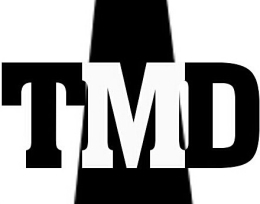John Prine’s music career began when someone asked him, “you think you can do better?” As it turned out, he could.
A vague statement, of course, so for context, Prine – who worked as a mailman in the late ‘60s in Maywood, Illinois – began to sing at open mic evenings at the Fifth Peg on Armitage Avenue. Originally a spectator, reluctant to perform, he eventually did when someone asked him that question, and, as the old cliché goes, a star was born.
Well, depending on your definition of “star,” that is. Truthfully, Prine’s performance of “Sam Stone” was greeted with icy silence, at best, mostly due to the audience being uncomfortable with the “Jesus” line. Prine’s career can’t be measured by that, though, nor can it be determined by a number of hit records; his subject matter was often too brutal and too real for commercial playlists. His talent and appeal can be best described by examining his three top musical influences: Hank Williams, who inspired Prine to write about common folks in their own terse vernacular; Bob Dylan, who inspired Prine to write lyrics that would make listeners pay attention; and Roger Miller, who inspired Prine to twist even his bleakest stories with some sort of absurdist humor.
Though they lived outside of Chicago, Prine’s parents were from Paradise, Kentucky, and Prine’s childhood summers there greatly influenced the subject matter and sound of his songs. He began learning how to play guitar at age 14 (a gift from his brother) while taking inspiration from his grandfather, who played with Merle Travis. After a few open-mic appearances, he got a residency at the Fifth Peg, and then a $1000-a-week gig at Earl of Old Town. He became a central figure in the Chicago folk revival, which included, among others, artists like Prine’s friend Steve Goodman. Goodman dragged singer/songwriter Kris Kristofferson to hear Prine one night, who was still a mailman at the time. Kristofferson, impressed with what he heard, invited Prine to the Bitter End in New York to play for Jerry Wexler of Atlantic Records.
The next day, Wexler offered Prine a contract, releasing his self-titled debut album by the end of the year. The album featured Elvis Presley’s rhythm section, liner notes from Kristofferson, and caused some to hail Prine as the “the next Dylan,” but the real selling point of the material was all Prine. To many it remains his finest work, and no doubt due to stellar material like “Sam Stone” (a portrait of a drug-addicted Vietnam veteran), “Angel From Montgomery” (later recorded by Bonnie Raitt), and “Hello In There” (an ironic look at old age on a debut album).
Folk, rock or country, Prine seemed to belong to all worlds and yet stood apart from them, too; any genre was lucky to claim him, really. Again, though, Prine did things on his own terms, and his second album, Diamonds in the Rough, reflected a love for bluegrass and the aforementioned Williams influence. 1975’s Common Sense featured a heavier reliance on drums, and 1979’s Pink Cadillac was Prine’s electric rockabilly moment (produced by Sam Phillips, naturally); again, he did what he wanted. Ironically, before that album, Cowboy Jack Clement persuaded Prine to come to Nashville in 1977 to record a rockabilly album, reminding him of his usual motto that, “if we’re not having fun, we’re in the wrong business.” They had so much fun playing around with it that they never actually finished it. After Prine moved to Nashville, he enjoyed modest success writing for artists like Tammy Wynette (“Unwed Fathers”) and Don Williams (“Love Is On A Roll).”
Rambunctious and as child-like as Prine was, though, the best way for him to express his art was for him to just start his own record label. He and then-manager Al Bunetta formed Oh Boy Records in 1981. In a sense, Prine changed when he met Fiona Whelan in 1988 at an after-party in Dublin, where she was working as a recording-studio business manager. Like a Johnny-and-June story, Prine had his own challenges of living life on the road, having been through two marriages, and like most artists of the ’70s, walking a bit too much on the wild side of life; the two, however, eventually married in 1996.
It’s as if Prine found a new normal from then on; even a stage-three neck cancer battle couldn’t deter him from appreciating that next chapter of his life. Prine’s writing did, however, slow down considerably throughout the 2000s. But in 2018, he shattered expectations with The Tree Of Forgiveness, which gave him the best chart performance of his career, selling 54,000 equivalent album sales and 53,000 total units in pure album sales in its first week of release. Modern performers like Jason Isbell, Sturgill Simpson and Margo Price constantly cited Prine as an influence, and with the growing prominence of independent country music in the 2010s, it’s almost a full circle moment for him.
On a separate note, this is not the first post to address a death from COVID-19 complications, nor will it be the last. This virus took one one of music’s most gifted writers at 73 years old (which is still too young), and though this constantly needs to be said, it’s a sad reminder to take it seriously and watch out for everyone out there, in whatever ways we can. Still, it doesn’t feel right ending this on a somber note – that’s not how Prine would want to be remembered. Fiona survived COVID-19, and John left us with one fantastic final project in The Tree Of Forgiveness, so let’s hope he’s up in Heaven finally starting that rock ‘n’ roll band in his nightclub.


One thought on “When I Get To Heaven (For John Prine)”